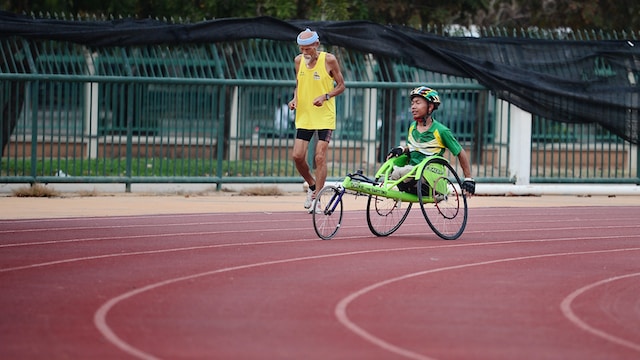Title: Mind over Matter: How Brain and Spine Implants are Restoring Movement for the Paralyzed Subtitle: Advancements in Neuroprosthetics Harness the Power of the Mind to Overcome Physical Limitations Date: May 25, 2023 By [Your Name], Staff Writer [City], [Country] – In a groundbreaking development that blurs the line between science and fiction, neuroprosthetic technologies
Title: Mind over Matter: How Brain and Spine Implants are Restoring Movement for the Paralyzed
Subtitle: Advancements in Neuroprosthetics Harness the Power of the Mind to Overcome Physical Limitations
Date: May 25, 2023
By [Your Name], Staff Writer
[City], [Country] – In a groundbreaking development that blurs the line between science and fiction, neuroprosthetic technologies are harnessing the power of the mind to restore movement for individuals with paralysis. Brain and spine implants, equipped with cutting-edge neural interfaces, are empowering paralyzed individuals to regain control over their bodies, offering renewed hope and independence.
Paralysis, often resulting from spinal cord injuries or neurological disorders, has long been considered an insurmountable obstacle. However, recent advancements in neuroprosthetics are challenging this notion, ushering in a new era of rehabilitation and mobility restoration.
At the forefront of this extraordinary progress are brain-computer interfaces (BCIs) and spine implants, which work in tandem to bridge the gap between the brain and paralyzed limbs. By decoding neural signals and transmitting them to external devices or the body itself, these implants enable individuals to overcome their physical limitations through the sheer power of thought.
The BCI, a marvel of engineering, establishes a direct link between the brain and a computer system. It detects and interprets neural activity, allowing users to manipulate external devices, such as robotic limbs, prosthetics, or even their own paralyzed limbs. By simply imagining the desired movements, the neural signals are translated into actionable commands, restoring agency and control.
Complementing the BCI, the spine implant serves as a conduit for communication between the brain and the paralyzed limbs. By electrically stimulating the nerves and muscles, the implant bypasses the damaged spinal cord, effectively restoring movement and sensation to previously paralyzed areas. This breakthrough integration of brain and spine implants has unlocked the potential for individuals to regain their independence and mobility.
The impact of these neuroprosthetic technologies cannot be overstated. For individuals who were once confined to wheelchairs, these implants offer the chance to walk again, reach for objects, and perform everyday tasks that were previously out of reach. The restoration of movement not only enhances their physical capabilities but also has profound effects on their mental and emotional well-being.
The development of brain and spine implants is the result of interdisciplinary collaboration among scientists, engineers, and medical professionals. Their tireless efforts have pushed the boundaries of what was once thought impossible, creating a profound impact on the lives of individuals affected by paralysis.
However, challenges remain on the path to widespread accessibility and affordability of these transformative technologies. The cost of implants, surgical procedures, and post-operative care can be substantial barriers to their adoption. Continued research, innovation, and advocacy are crucial to drive progress in making neuroprosthetics accessible to all who can benefit from them.
Furthermore, ethical considerations are paramount in the development and use of these technologies. Ensuring patient autonomy, informed consent, privacy, and protection against potential risks are vital elements that must be addressed to uphold ethical standards.
While the current focus of neuroprosthetics is primarily on physical rehabilitation, the potential applications extend beyond mobility restoration. Scientists and researchers are exploring the use of implants for treating neurological disorders, enhancing cognitive functions, and even facilitating communication for individuals with severe speech impairments.
The future of neuroprosthetics holds incredible promise. With ongoing advancements and increasing accessibility, the integration of brain and spine implants has the potential to redefine what it means to live with paralysis. It offers a ray of hope for millions of individuals worldwide, reminding us that the power of the human mind can triumph over physical limitations.
In a world where mind over matter is becoming a reality, the barriers that once confined individuals to a life without movement are being shattered. The convergence of neuroscience and technology has given rise to a new era of possibilities, where the indomitable human spirit can transcend its physical constraints and embrace a future of newfound freedom and independence.

















Leave a Comment
Your email address will not be published. Required fields are marked with *